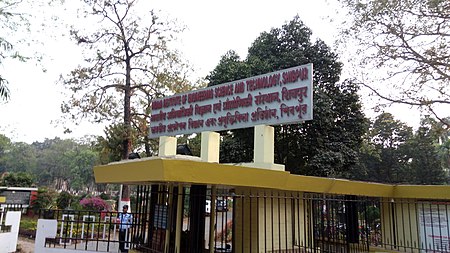IIEST, Shibpur
1856 establishments in British IndiaAcademic institutions associated with the Bengal RenaissanceAll India Council for Technical EducationAll pages needing cleanupEducation in Howrah ... and 4 more
Educational institutions established in 1856Engineering colleges in West BengalUniversities and colleges in Howrah districtUse Indian English from October 2019

Indian Institute of Engineering Science and Technology, Shibpur, abbreviated as IIEST Shibpur (locally known as "BESU") is a public university located at Shibpur, Howrah, West Bengal. Founded in 1856, it is recognised as an Institute of National Importance under MHRD by the Government of India. It is controlled by the Council of NITSER.
Excerpt from the Wikipedia article IIEST, Shibpur (License: CC BY-SA 3.0, Authors, Images).IIEST, Shibpur
Palmyra Avenue, Howrah Shibpur
Geographical coordinates (GPS) Address Website External links Nearby Places Show on map
Geographical coordinates (GPS)
| Latitude | Longitude |
|---|---|
| N 22.555833333333 ° | E 88.305555555556 ° |
Address
Indian Institute Of Engineering Science And Technology, Shibpur (IIEST Shibpur)
Palmyra Avenue
700024 Howrah, Shibpur
West Bengal, India
Open on Google Maps





